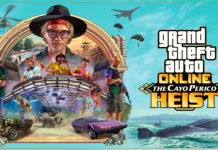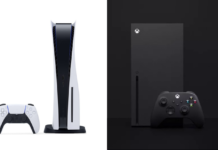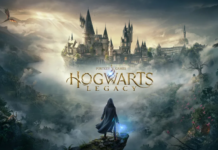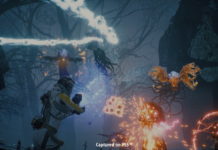What’s there to say about this sadly underrated system? Probably too much. The console remains a favorite amongst many a hardcore gamer, but it will always remain overlooked as that other 8-bit console by too many. Perhaps a closer look is in order?
An Odyssey
Developed by NEC (also known as the Nippon Electric Company in Japan) and Hudson, the PC Engine was released sometime during October 1987 — a year before the Mega Drive — in Japan at just over USD$300. While the system was actually quite powerful, due to a 7.12MHz drive that ran well under the stress of many additional chips which boosted its capabilities, it was still an 8-bit system. However, an 8-bit system that most agree to have many conversions from Sega’s Mega Drive look better on the PC Engine.
What initially brought attention to the system was the sheer quality and variety of its games. The first generation of games were made up by an eclectic bunch of conversions that set the tone for the machine, including R-Type, Fantasy Zone and Space Harrier. It did get its fair share of original titles though, with games such as Bonk, Blazing Lazers and Devil Crash going further to prove the credentials of the system. However, one genre will always be king on the console: the shoot-’em-up. Some of the greatest games in the genre have been released on the PC Engine.
The design of the console, while maintaining dissenters for its stature, is in fact one of the most beautiful ever devised. Being the smallest home console ever released is one thing, but having an expandable size with tinier-than-you-could-imagine game cards — well, you can’t help but remain in love with the nostalgic machine forever.
There was a downside to this rather simplistic design though, while the Genesis came with one controller, the PC Engine came with only one controller port. As such, a multi-tap which allowed five more controllers to be plugged into the system was required for any multiplayer games. And while addressed in later models, those who wished to improve the quality of the visuals needed to buy an AV booster, as the console only came with an RF out. Such are the prices of beauty.
The system did break new ground with its CD-ROM add-on, becoming the first such console to receive one. (besides the near unknown FM Towns Marty system) Launched in 1988, the PC Engine CD-ROM connected to the main unit through an add-on which featured both back-up RAM storage and AV out. Add to this the fact that the drive was single speed and doubled as a CD player — more than relatively impressive in those days. Even further down the road was the upgrade of the Super CD-ROM2, which quadrupled the size of the RAM buffer, resulting in the release of more quality titles, Dracula X: Rondo of Blood chief among them.

The smallest console design ever?
Welcome to America
After making more than a tangible impact on the Japanese gaming scene, more than holding off the Mega-Drive and maintaining the number two spot behind the Famicom for years — it was time for the PC Engine to be brought over to North America.
Arriving with much fanfare, most were banking on the system to outsell the Genesis with its huge library of fantastic games and major 3rd-party support in Japan to boot. As it turned out though, most big games were denied North American release by publishers aware of the “Nintendo risk”. With the NES (Nintendo Entertainment System) flying high in the market, Nintendo were ruthless in keeping 3rd-party publishers in line, threatening to bar the release of games belonging to publishers who worked on competing consoles.
For better or worse, NEC rolled out the TurboGrafx-16 console on September 1st, 1989. Initially, the system was marketed towards being a direct competitor with the NES and early television adverts featuring a montage of its launch titles (Blazing Lazers, Alien Crush, etc.), made much fanfare of the console’s superior sound and graphics. Of course, as time would tell, the system’s real competition was the Sega Genesis, which launched in North America shortly after the TG-16. The launch of Sega’s console arrived hand-in-hand with an advertising campaign mocking NEC’s [rather dubious] claim that the TG-16 was the first 16-bit system.
The console’s mascot Bonk, a “cave dude with an attitude”, became the most visible face for the TG-16, much like Nintendo’s Mario and Sega’s Sonic. Bonk appeared in a series of titles, including some of the TG-16’s most popular games: Bonk’s Adventure and the sequel, Bonk’s Revenge. TTi would then alter him into Air Zonk, a cyborg-Bonk who starred in a horizontal shooter of the same name, and was adopted as the mascot of the TurboDuo. He appeared on console packaging, advertisements, countless brochures and catalogs, and at trade shows, such as E3 and CES. Bonk is, of course, the localized name for the system’s mascot. In Japan, the “cave dude” was known as “PC-Genjin”. None to similarly, Air Zonk was known as “PC Denjin Punkic Cyborg” in Japan. (both being a play on the console’s name — “PC Engine”)

Bonk, bonkin’ around.
1990 was the year that saw NEC fire off its first portable system, the TurboExpress (or PC Engine GT, released the same year in Japan), which was a portable version of the TG-16 down to having the same power and compatibility capabilities, and using the exact same carts of the home console.
Following the success of the pioneering PC Engine CD-ROM peripheral in Japan, the year also saw NEC release the first console CD drive in North America with the Turbografix-CD. Unfortunately, due to mismanaged marketing, a badly set price of $399 that did not even include a pack-in game, and a definite lack of quality software: the pioneering add-on performed poorly in the local market. Only Ys Book I & II and a handful of others were recognized (and are still recognized) as worthy TurboGrafx-CD titles. However, the release of an updated system card add-on which could be inserted into the core unit when playing CD games, allowed the play of many sought-after Japanese CD-ROM titles which could be purchased from an import store.
By 1992, the Sega Genesis had gained huge ground over the TurboGrafx-16, and with the upcoming threat of the Sega CD launch, the system was in for a much-needed face lift. To complete the task of redesigning the TG-16 and CD-ROM add-on into one unit, NEC created Turbo Technologies Inc. (TTi), made up of both NEC and Hudson Soft employees. The result being the TurboDuo, a slick-looking unit which not only increased memory capacity but sported a considerably lower price than previous models. However, the machine was too little to late for the American market, as dusk shone on the year of 1993, all third-party support ceased for NEC’s systems, and left them in fourth place behind the Sega Genesis, Super NES and NES.
Back in Japan, things weren’t looking so rosy either for the system, with it losing ground fast to the Super Famicom. NEC made a final effort to resurrect the system with the release of the Arcade Card expansion, which brought the total amount of RAM to a massive 2048K. Thus allowing conversions of popular Neo-Geo games, and even allowing the system to display pre-rendered 3D graphics eclipsing those of what the Super Famicom and Mega Drive/Mega-CD could offer. However, NEC was again too late with its expansion, which never made it to US and produced only a few quality games.
Start Your Engines
The array of different models available for the system is actually quite flabbergasting. Here’s a complete list, including some we’ve already gone over.
Model: PC Engine
Released: 1987

North American version – TurboGrafx 16 (1989)
Machine: PC Engine CD-ROM
Released: 1988

North American version – TurboGrafx CD
Machine: PC Engine CoreGrafx
Released: 1990

Offering nothing new but a smooth black finish and AV out instead of the RF standard, little differs this model from the ’87 original.
Machine: PC Engine Shuttle
Released: 1990

Machine: PC Engine Super Grafx
Released: 1990

With additional VRAM and two extra graphics processors, it’s unfortunate that this model lacked quality games and had a rather high price. None-too-surprisingly, it failed to garner much of an audience.
Machine: PC Engine GT
North American version – Turbo Express
Released: 1990

A portable version of the PC Engine that featured a high-quality recessed LCD screen, complete HuCard game compatibility, an auto-fire switch, and a TV tuner extension. Perhaps ironically, a TurboExpress appeared in the film Enemy of the State well after the system’s demise.
Machine: PC Engine Duo
North American version – Turbo Duo
Released: 1991

A PC Engine and the new Super CD-ROM2 drive together. Existing owners could buy the SCD-ROM 2 drive as a standalone unit or in the form of an upgrade card for the PC Engine CD-ROM.
Machine: CoreGrafx 2
Released: 1991

Machine: PC Engine LT
Released: 1991

The LT (aka Lap Top) featured a huge four inch screen, doubled as a portable TV and was fully compatible with the Super CD-ROM2 peripheral.
Machine: PC Engine Duo-R
Released: 1993

The Duo-R put a more stylish and focused design aesthetic on the standard model released two years prior to it.
Machine: PC Engine Duo-RX
Released: 1994

Virtually the same as the standard model, the Duo-RX merely offered the use of six buttons over the standard two.
Unreleased Hardware:
The Magnificent Seven
I’ve often discussed games with friends and acquaintances of similiar tastes, and there’s one thing I’ve always deduced from these talks: classics on the PC Engine are often the best games you’ve never played.
Dracula X – Rondo of Blood


Before “Metroidvania” was born in the shape of this game’s insanely popular sequel Symphony of the Night, the Castlevania series was much different, and Rondo of Blood was the franchise’s last gasp with the old-school gameplay that had so much become its hallmark trait.
Fiendishly difficult gameplay, multiple paths and hidden stages, memorable situations (the stagecoach battle with Death and a raft ride come to mind), and a sublime soundtrack make up this game which delivers on all these levels and more. Even the most well-known and most-loved platforming title in the series, Castlevania IV, cannot stand up to the majesty and sheer beauty that so ingrains this game.
Military Madness

Known as Nectaris in Japan, the sci-fi-themed turn-based strategy title achieved successful status selling more than 200k units in the country. The game featured both deep control and strategy, as well as a fluid hex-based control system. While the US release met with critical acclaim, it would not match the popularity seen in Japan.
Ys I & II

Ys (“yeese”) I & II is a compilation of the first two games in the role-playing series which follow the adventures of the red-haired swordsman Adol Christin. The franchise itself is quite unique, with the game world taking the form of a fictionalized earth, where Africa is known as Afroca or Afroka and Europe as Europa.
The games’ music is also one of the key ingredients that helped put Ys on the map. Its soundtrack by Yuzo Koshiro (Shenmue, ActRaiser) Mieko Ishikawa and Hideya Nagata was a groundbreaking tour-de-force which helped move game music away from the simple blips and beeps of yore, to a time where now some say that the music is half the production.
Blazing Lazers

One of my favorite games media hyperbole quotes of the year has to be, “It’s almost too intense”, describing the excellent WWII-shooter Call of Duty 2. I’ve got to say, that definitely applies to this game as well.
Addictive, fast and intense. Blazing Lazers is everything a shooter should be, and is perhaps the most versatile overhead shooter on the PC Engine. With as many powerups on screen as enemies, challenging gameplay, and quality graphics and sound — this is one of the very best shooters this system or any other for that fact, have to offer.
R-Type

R-Type can be seen as both a legendary game under the influence of nostalgia, and a flawed title which would be deemed simplistic and underwhelming by today’s standards. However, it’s still one hell of a ride, and the highly challenging bosses in the game alone make the price of admission more than worth it. An aging beauty.
Bonk’s Revenge

Smooth control, addictive gameplay, vibrant visuals and effective sound make up this quality sequel. Bonk’s Revenge took everything that was good about the previous game and made it better.
Gate of Thunder
There isn’t much of Gate of Thunder to not like. It’s intense, smooth and challenging. The graphics are extremely impressive, with the use of multilayer scrolling showing off the high-end capabilities of the Turbo CD. The sound is amazing, with a great soundtrack actually undone by incredible dynamic sound effects. Perhaps, the best side-scrolling shooter available on HuCard format.
Any questions, comments or queries? Send them in to me at timthomas@advancedmn.com.
Tim Thomas is an editorial columnist and news editor for AMN. He currently writes for XA and 360A, and readers can view his column A Look Back on the channel.










